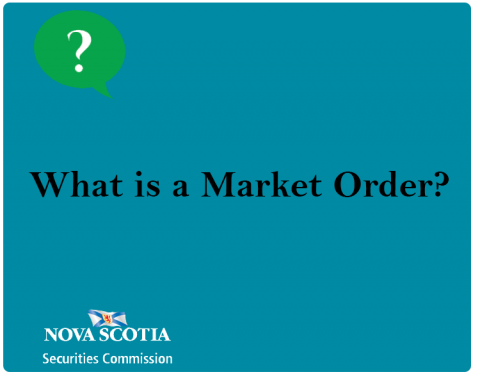Submitted by nsscadmin on

As DIY investing becomes easier with the rise of online investing and app investing through smart devices, more investors are taking a shot at investing in the stock market. If you’re going to be making your own stock picks and DIY investing, it helps to know some of the terminology. Over the next three weeks we’ll be looking at the common order types stocks investors will come across. This week we’ll start with market orders.
A market order is the most basic type of order for purchasing and selling stocks. When buying stock through a market order, you are willing to pay whatever the price of the stock is at the time of execution. When selling through a market order you are willing to receive whatever the price of the stock is at the time of execution. Under a market order your order will execute, but you are not guaranteed a specific price.
Let’s look at an example. I want to purchase 100 shares in a company. Those shares are currently trading at $5.25 per share. I submit a market order to purchase 100 shares and my order is received. When the order is executed, due to a fast moving, volatile market, the price has risen to $5.40 per share, which is the price I have now paid for my order, for a total of $540.
The same example applies if I place a market order to sell shares. When I place my market order to sell 100 shares in a company, the current price may be trading at $5.00. If, by the time my order is processed the shares are trading at $4.75, this is the price my shares will be sold at, for a total of $475.
This is the risk in placing a market order. You are all but assured that your order will be executed as soon as possible, but it will not necessarily be executed at the trading price you see when you place your order.
Next week we’ll continue our look at stock purchasing and selling by looking at limit orders.
